|
Click pictures for a larger version.
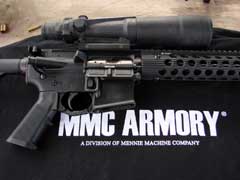
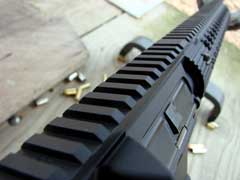
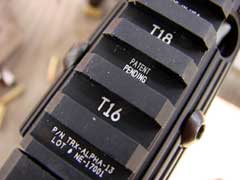
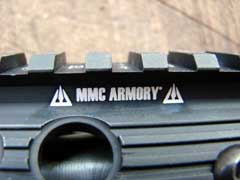
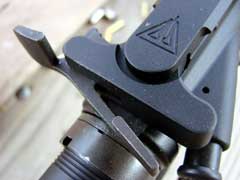
Unique tactical latch on charging handle.
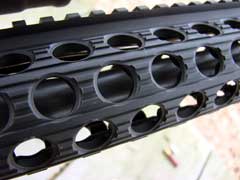
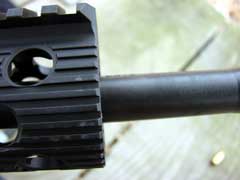

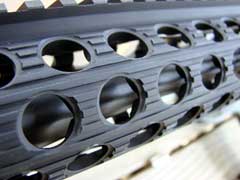
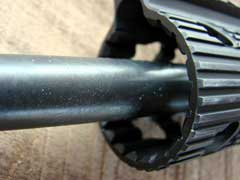
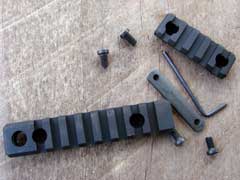
Accessory rails attach to the Troy thirteen-inch Alpha handguard.

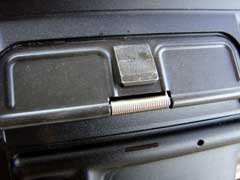

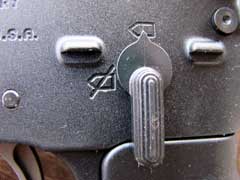
Top to bottom: case deflector, dust cover, forward assist, safety lever.
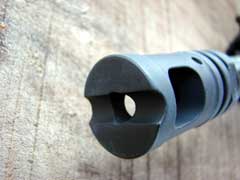
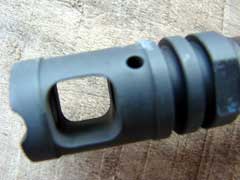
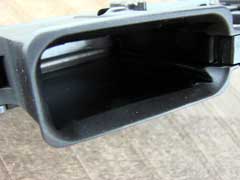
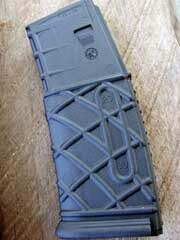
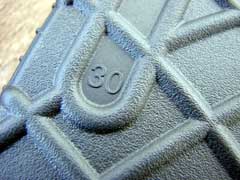
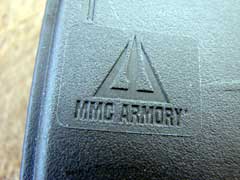
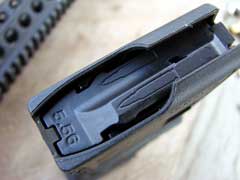
MMC Armory thirty-round polymer magazine.
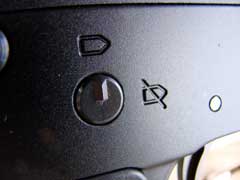
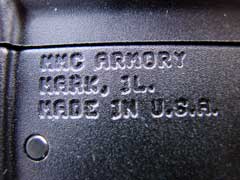
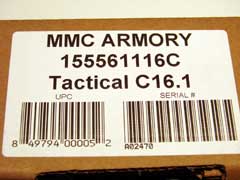
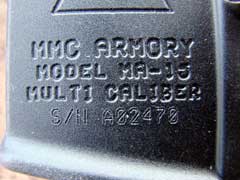
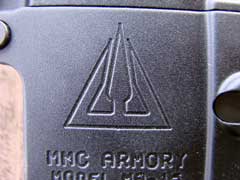
|
|
MMC Armory is in the business of
manufacturing top-tier AR-15 style rifles and components. MMC
Armory is a division of Minnie Machine Company of Illinois. They
have been in business for over four decades, producing machined
parts for the military and industry.
Entering into the crowded field of AR-15
builders, MMC is not just a parts-assembly gun maker. While they
do procure some high-quality components, such as their Troy hand
guards, MMC manufactures many of their rifle components in
house. The rifle shown here is their “Tactical C16.1”, and
is my favorite of the rifles that they manufacture.
Many AR builders make their rifles too heavy.
I have nothing against a heavy AR for benchrest work or for long
range varmint hunting, but for a fighting rifle, I like a rifle
that handles closer to the original concept of the AR-16/M16; a
lightweight, portable, and effective fighting weapon. With the
C16.1, MMC got it right.
The receiver halves of the MMC are machined
from 7075 T6 aluminum and hard coat anodized. The buffer tube is
mil-spec, polished inside, and is of the six-position style,
wearing a Rodgers Superstoc buttstock. The pistol grip is a
checkered A2 style unit. As mentioned above, the hand guard is
from Troy, and is a ventilated aluminum unit with a full-length
Picatinny rail on top. Thankfully, the rest of the hand guard is
without rails, but sections of rail are included to position as
desired, for the attachment of accessories. I like the feel of
this Troy rail in my hand. It is not excessively large, as is
often found on other rifles.
The barrel on the C16.1 is thin, reducing
weight substantially compared to a heavy barrel. The barrel is
made of high carbon 4150 chrome-molybdenum Vanadium steel, and
nitride-treated to reduce heat and extend the life of the
barrel. Thankfully, the barrel is not chrome-lined, as none is
needed with the nitride treatment. The barrel measures sixteen
inches in length, is rifled one turn in eight inches, and is
fitted with a compensator at the muzzle. The compensator seems
to be very effective.
The gas block is an MMC low-profile design,
and the rifle uses a mid-length gas impingement system. The bolt
carrier group is full-auto rated, and is coated with nickel
boron to increase lubricity and eliminate corrosion. The coating
also eliminates the need to lubricate the carrier group, which
can be a great advantage when using the weapon in an environment
of blowing dust and sand.
The MMC rifle shown here weighs in at six and
one-quarter pounds on my scale, without magazine. The trigger
pull is crisp, and releases with five pounds, ten ounces of
resistance, which is a bit heavier than the specified four and
one-half pounds, but did not seem to hinder accuracy testing at
all.
I
ran several different brands and types of ammunition through the
MMC carbine. For
accuracy testing, I mounted a Leupold Mark 4 8.5 to 25 power
scope, set at its highest magnification. The scope was attached
to the Picatinny rail using an ArmaLite one-piece mount.
Accuracy testing was done firing three-shot groups on paper at
100 yards, and allowing the barrel to cool slightly between
groups. Accuracy testing was done with the rifle resting in a Target
Shooting, Inc. Model 500 rifle rest, to eliminate as much
shooter error as possible. Two loads that exhibited excellent
accuracy were Buffalo Bore 69 grain Sniper ammunition, and Black
Hills 69 grain match ammo. Every type of ammunition tested
produced decent accuracy, with the worst being Winchester
white-box USA 55 grain, which grouped in the two inch range. The
Winchester 62 grain USA load did much better. Velocity testing
was done with the chronograph set out twelve feet from the
muzzle at an elevation of 541 feet above sea level,
approximately. Temperatures hovered around the twenty-six degree
Fahrenheit mark during all velocity testing, with humidity in
the sixty-five percent range. Winds were holding a steady
fifteen miles per hour, with an occasional gust doubling that
wind speed. Velocity readings are the average of several shots
fired, and the results are listed in the chart below. Velocity
readings are listed in feet-per-second (fps). Bullet weights are
listed in grains. FMJ is a full metal jacket bullet. HP is
hollowpoint. V-Max is a polymer-tipped varmint bullet. TSX is a
Barnes Triple Shock homogenous copper hollowpoint bullet. The
handload listed uses the TSX bullet with 24.5 grains of Ramshot
TAC powder, a Remington small rifle primer, and Winchester
commercial .223 Remington cases.
Accuracy is the average of three groups fired with each
type of ammunition. Accuracy is listed in inches.
| Ammunition |
Bullet Weight |
Velocity |
Accuracy |
| Stryker V-Max |
55 |
2778 |
0.82 |
| Lake City M855 |
62 |
3012 |
1.50 |
| Hand Load TSX |
62 |
2809 |
0.92 |
| Winchester USA FMJ |
62 |
2828 |
1.00 |
| Winchester USA FMJ |
55 |
2990 |
2.12 |
| Buffalo Bore HP |
69 |
2865 |
0.63 |
| Black Hills HP |
69 |
2631 |
0.50 |
| Wolf Gold HP |
75 |
2502 |
0.88 |
As mentioned above, accuracy was very good
with most ammunition tested, and excellent with some. The Black
Hills 69 grain match load did exceptionally well fired from this
rifle. As expected,
the MMC carbine ran pretty much flawlessly. There were no
failures to feed, fire, nor eject, with one odd exception. Using
the factory-supplied magazine, once the bolt locked in the open
position with cartridges still in the magazine. This happened
only once, and did not occur using any aluminum GI magazines.
The compensator works very well to attenuate the already-mild
recoil of the 223/5.56mm cartridge. The hand guard is relatively
slim, and offers good control of the weapon. Many hand guards
are too large on other AR-15 rifles, and feels to me like I am
holding a fence post. This one is just right.
After completing the accuracy testing, for
plinking offhand at targets of opportunity such as steel and
rocks, I mounted my Trijicon 5.5x50 ACOG. The ACOG has superb
clarity, and the 5.5 power was more than what magnification is
needed out to 100 yards, but I have used this scope out to 1125
yards on other rifles, and it is an excellent choice on the MMC
Armory carbine.
The MMC Armory Tactical C16.1 is one of the
best-balanced, best-handling AR-15 style rifles on the market.
Manufacturer’s suggested retail price, as of the date of this
review, is $1639 US. This MMC Armory rifle is accurate,
reliable, and made in the USA.
Check out the MMC firearms and accessories
online at www.mmcarmory.com.
Check out the high quality scopes shown here
at www.leupold.com
and www.trijicon.com.
To
order quality 223 and 5.56mm ammunition, go to www.buffalobore.com,
www.doubletapammo.com,
www.midsouthshooterssupply.com,
and www.luckygunner.com.
Jeff Quinn
NOTE: All load data posted on this
web site are for educational purposes only. Neither the author nor
GunBlast.com assume any responsibility for the use or misuse of this data.
The data indicated were arrived at using specialized equipment under
conditions not necessarily comparable to those encountered by the
potential user of this data. Always use data from respected loading
manuals and begin working up loads at least 10% below the loads indicated
in the source manual.
  
Got something to say about this article?
Want to agree (or disagree) with it? Click the following link to
go to the GUNBlast Feedback Page.
|
|
Click pictures for a larger version.

MA-15 with Trijicon 5.5x50 ACOG scope.
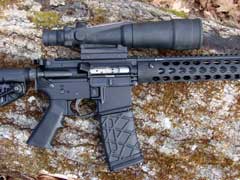
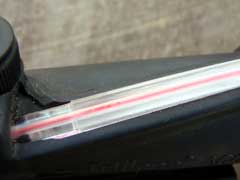
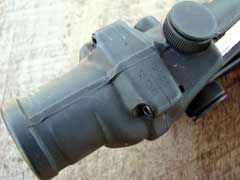
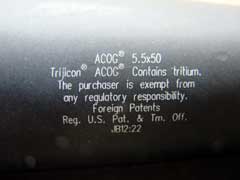
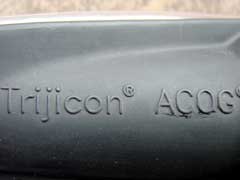
Trijicon 5.5x50 ACOG scope.
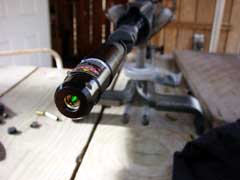
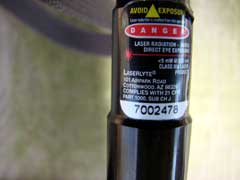
LaserLyte green laser bore sighter.
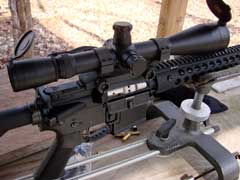
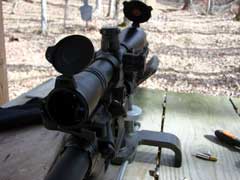
Leupold Mark 4 8.5 to 25 power scope was used for all
accuracy testing.
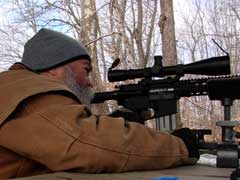
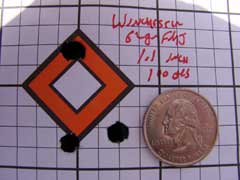
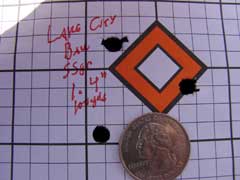
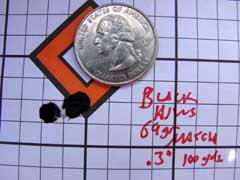
Accuracy testing at 100 yard distance.
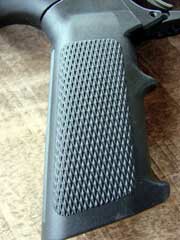
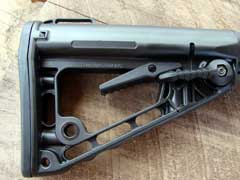
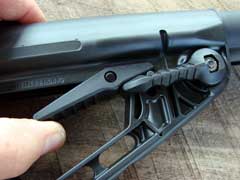
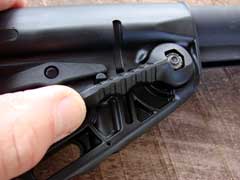
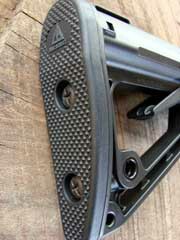
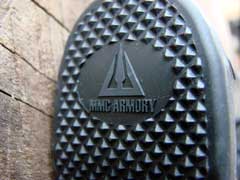
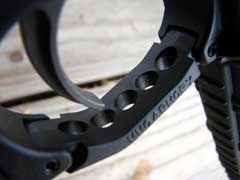
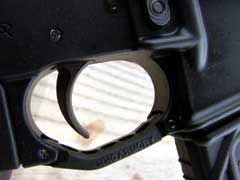
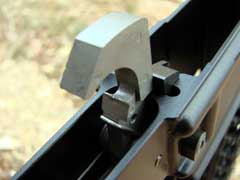
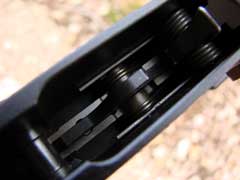
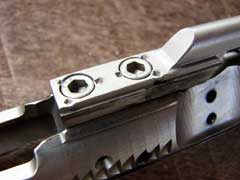
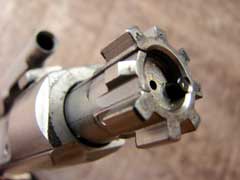
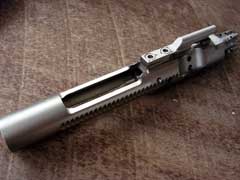
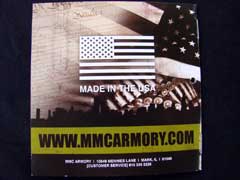
|
![]()